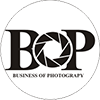The effort a photographer puts in a body of work is as important as self analysis for growth and improvement, as important as the time spent behind the lens its also important a photographers sees self as a creative a with thought process behind every image.
Mastery in the art of photography needs a deeper sense of self-acceptance, evolution, understanding the right skillset, familiarity with the right gears as well as adaptability to the skill level intertwined with the necessary change in perspective.


So how do you measure this evolution? How do you separate genuine progress from comfortable routine? The answer lies not in social media but the ability of the photographer to adapt, think outside the box, and set a mark beyond initiated boundaries.
An effective approach when evaluating your technical expertise is to evaluate your previous work. Analyse what has changed, Are you able to handle various lighting conditions more effectively? Are there improvements in the clarity, exposure, and composition of your images, do the images evoke the right feelings from your perceived audience? If not, here are few tips to help measure your creative growth rate.
Reconsidering The Methods of Evaluating Your Creativity and Creation
While photography can be an important technical skill as well, do remember that it is an art form in the core. An image may be well exposed. However, when it is poorly composed, or is lacking in storytelling, it generally lacks artistic insight. You can use the methods explained to assess your creative progress. Check how deeply thought through your compositions are. Are your images composed in analytical, compositional patterns like the rule of thirds, leading lines, or even symmetry? More fundamentally, are you aware of how and when to break these rules to achieve uniqueness?

Assessing Creativity and Composition
While technical proficiencies might matter, at the end of the day, photography is artistry. Compelling storytelling is notably frustrating when it is not paired with a visually pleasing image, and an image without depth is definitely not art. A recommended approach to observing growth in creativity is by checking how elaborate your compositions have become over time. Are your images constrained by strong compositional rules like the rule of thirds, leading lines, or symmetry? More importantly, do you understand how a tweaked rule might result in something truly remarkable?
Creativity also applies to the emotional telling of your images. Can your images tell a story or make the audience feel something? Are they relatable? A great way to see how deep the water goes is to ask other photographers and photography communities for their reactions. If those who constantly watch your work seem to like your new pieces, you are headed in the right direction. If not, consider taking a different approach, trying various styles, and giving yourself challenging tasks that will let your creativity go free.
Mastering Post-Processing Skills
Editing/Retouching plays a crucial role in refining your work. A good photographer should understand how to enhance images without over-processing them. Assessing your post-processing skills involves looking at whether your edits improve or degrade your photos. Are your colors well-balanced? Do your images maintain a natural look while still standing out?


Using editing tools like Adobe Lightroom, Photoshop, or Capture One efficiently is a key factor in grading your progress. If you rely too heavily on presets without understanding how to manually tweak your photos, it may be time to invest in learning proper post-processing techniques. Watching tutorials, following editing workflows of professional photographers, and experimenting with different styles can significantly improve your post-production expertise.
Building a Strong Personal Brand
Your ability to brand yourself effectively determines how well you attract clients, grow your audience, and establish authority in the industry. If you want to grade yourself as a photographer, ask: Do you have a professional website or portfolio showcasing your best work? Are you consistently sharing your work on social media to engage with your audience? Have you developed a recognisable style that makes your work distinct?
A strong brand goes beyond just images; it involves storytelling, marketing, and client engagement. If you are struggling to position yourself in the industry, consider refining your social media strategy, collaborating with other creatives, or investing in personal branding workshops.
After evaluating different aspects of your photography, it is time to reflect on your progress. If you find yourself excelling in technical skills but lacking in branding and marketing, your focus should be on building visibility. If your creativity is strong but your technical execution is inconsistent, refining your skills through practice and training is essential.
Scoring yourself as a photographer is not about being overly critical but about recognising where you stand and striving to improve. Growth comes from constant learning, experimentation, and adaptation. Set new challenges, invest in continuous education, seek constructive feedback, and most importantly, enjoy the process of evolving as an artist.
By periodically evaluating your journey, you not only sharpen your skills but also carve out a clearer path toward becoming a remarkable and successful photographer.








